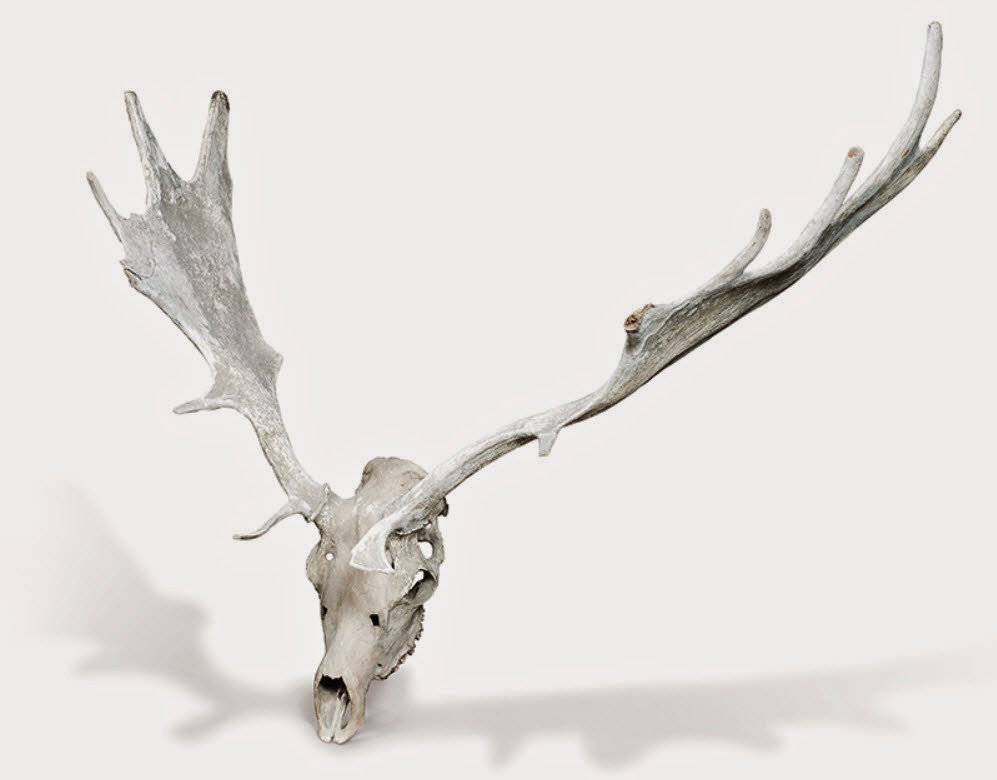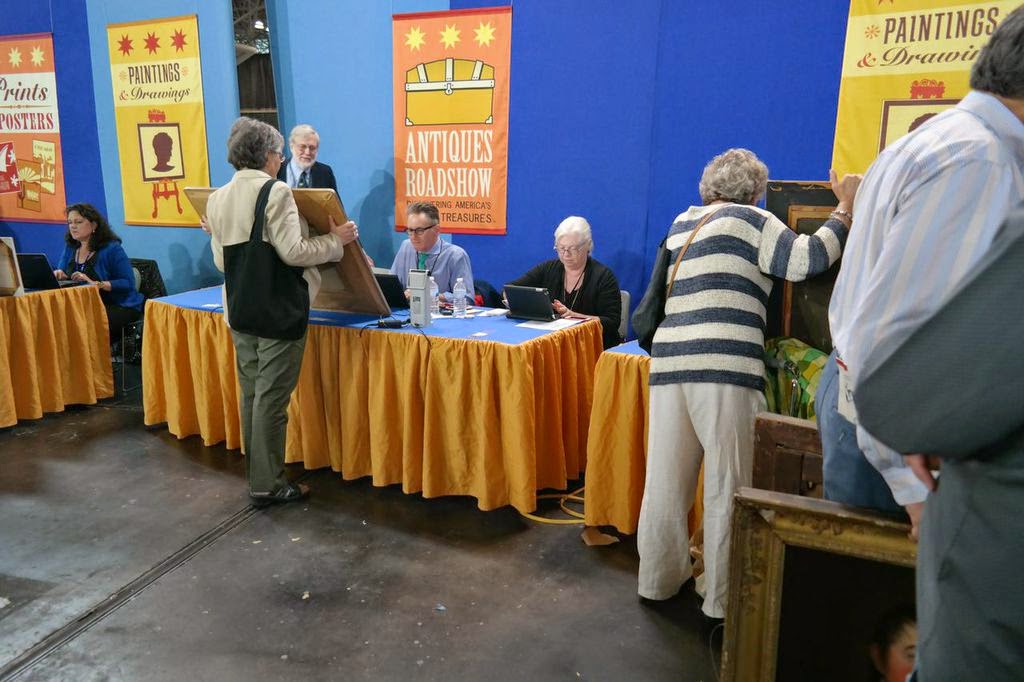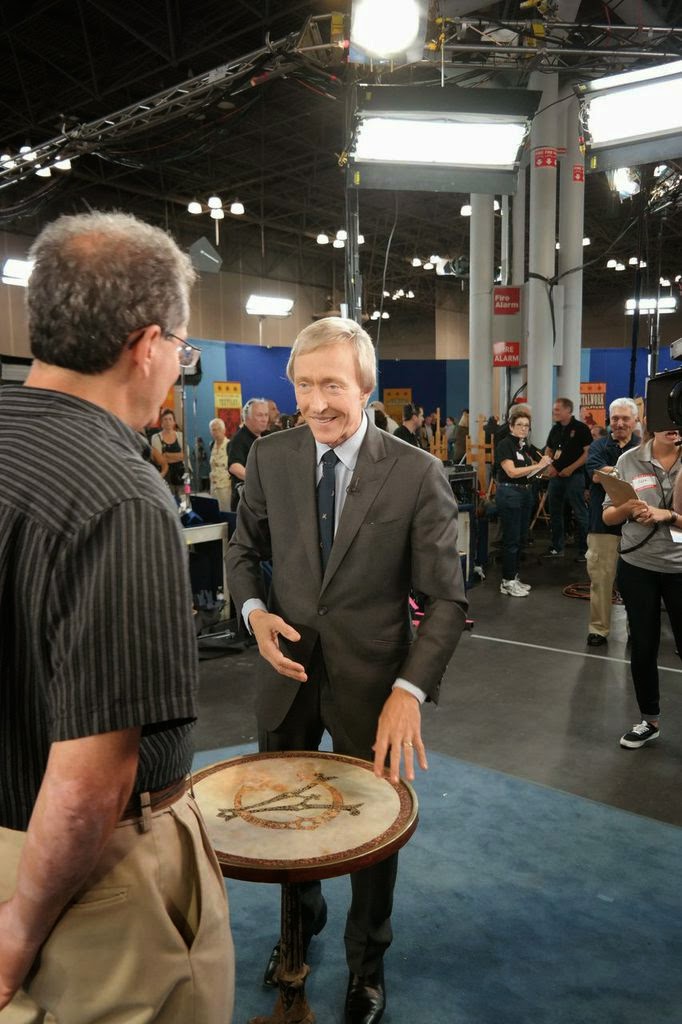1. SALEM, MASS.- The Peabody Essex Museum presents a new installation drawn from the museum's Native American art collection - the oldest, most comprehensive ongoing collection of its kind in the Western hemisphere. Raven's Many Gifts: Native Art of the Northwest Coast celebrates the rich artistic legacy of Native artists along the Pacific Northwest Coast while exploring dynamic relationships among humans, animals, ancestors and supernatural beings. Featuring nearly 30 works from the 19th century to present day, the installation includes superlative examples of works on paper, wood carvings, textiles, films, music and jewelry. Raven's Many Gifts is on view through mid-2015....more
http://artdaily.com/news/71718/New-installation-features-Peabody-Essex-Museum-s-world-class-Native-American-art-collection#.U95X7v5OXVl
![]() 2. READING, PA.- The Reading Public Museum announced the display of one of its most important objects, a painted buffalo hide robe from the early decades of the nineteenth century. The hide
2. READING, PA.- The Reading Public Museum announced the display of one of its most important objects, a painted buffalo hide robe from the early decades of the nineteenth century. The hide
robe will be on view, alongside addition objects from Plains nations including the Lakota, in The Museum’s North American Indian Gallery on the first floor. Less than 30 examples survive
from this early period, and pictorial buffalo hides are among the most impressive early contact objects....more
http://artdaily.com/news/71151/Early-nineteenth-century-painted-Buffalo-hide-robe-now-on-display-at-the-Reading-Public-Museum-#.U8AWWVfb4Sk
3. TACOMA, WA.-Tacoma Art Museum presents a dazzling visual experience of contemporary Native America Matika Wilbur, a leading young photographer from the Pacific Northwest (Tulalip and Swinomish Tribes), has traveled more than 60,000 miles in the Western United States over the past year, acquiring extraordinary portraits and remarkable narratives in her quest to visit and photograph people from every federally recognized sovereign Native American tribe (562 at the start of her project, now 566). Project 562
examines the Indian image across socioeconomic and intergenerational spectrums, from tribal to hardcore urban, traditional elders to enduring teens. To date, Wilbur has visited about one-third of the 566 federally recognized tribes in the United States. She has been welcomed into rare experiences, capturing images and
voices that have never before been represented....more
http://artdaily.com/news/70438/Tacoma-Art-Museum-presents-a-dazzling-visual-experience-of-contemporary-Native-America#.U8BES1fb4Sk
4. NEW YORK - Through October 5, 2014 | The Metropolitan Museum of Art: The Nelson A. Rockefeller Vision: In Pursuit of the Best in the Arts of Africa, Oceania, and the Americas
From the Americas, highlights in the exhibition will include: a 12th-9th century B.C.E ceramic "Baby" figure, which was a centerpiece of the landmark 1965 exhibition The Jaguar's Children: Pre-Classic Central Mexico—the work's acquisition during the course of the exhibition had a transformative impact on The Museum of Primitive Art's pre-Columbian holdings; a vibrantly colored 14th-century feathered Inca tunic from Peru acquired in 1956; a 19th-century Tlingit knife from Alaska which was among the first objects from North America that Nelson Rockefeller purchased and kept in his home prior to donating it to The Museum of Primitive Art in 1959. Oceanic highlights will include: one of only two dozen surviving examples of
Solomon Island shields with mother of pearl inlay; a Mangareva Figure representing the Polynesian agricultural god Rago, considered the signature Oceanic work acquired by The Museum of Primitive Art; and an Abelam Yam Mask, a basketry genre from New Guinea collected in the region by curator Douglas Newton considered among the most outstanding examples of a tradition in which enormous yams were exchanged in ceremonial competitions. African highlights will include: a monumental D'mba headdress from Guinea selected on the basis of its favorable comparison with the one now at the Musée Quai Branly in Paris; Male and Female Poro Figures by a master from Ivory Coast that were featured in the 1963 landmark exhibition Senufo Sculpture from West Africa; and the epic creation of a Fang Master from Gabon: Sculptural Element from a Reliquary Ensemble (The Great Bieri). Robert Goldwater, the director of The Museum of Primitive Art, advised Rockefeller on the acquisition of the latter work, considering it among the masterpieces of the history of art.
Located adjacent to Nelson Rockefeller's boyhood home and directly across from the Museum of Modern Art, this innovative and emphatically fine arts institution had the mission to build an authoritative collection and to generate exhibitions that would shape and expand public appreciation of non-Western art. Art historian Robert Goldwater served as its director, and René d'Harnoncourt, Nelson Rockefeller's close associate and director of the Museum of Modern Art, remained an active advisor and member of its executive committee. Over the course of its history, The Museum of Primitive Art's connections to the regions represented were varied but significant: Nelson Rockefeller traveled extensively to Mexico and Latin America and served as Assistant Secretary of State for American Republic Affairs under President Franklin Roosevelt as well as President of Inter-American Affairs; his son, Michael, undertook research and field collecting in the Pacific; and the transition from colonialism to independence was celebrated through the loan of major works from the African collection to several important exhibitions in West and Southern Africa. metmuseum.com and http://www.undo.net/it/mostra/166122
5. CAMBRIDGE, UNITED KINGDOM Museum of Archaeology & Anthropology, Cambridge
Crafting Colour: Beads, Pattern and Painting from the Kalahari
24 Jun 14 to 28 Sep 14
![]() Contemporary prints and paintings produced in western Botswana over the last twenty five years feature in the Museum of Archaeology and Anthropology’s summer South Lecture Room exhibition. Many of the
Contemporary prints and paintings produced in western Botswana over the last twenty five years feature in the Museum of Archaeology and Anthropology’s summer South Lecture Room exhibition. Many of the
artists responsible talk about their work as a form of storytelling, and the stories they tell relate to the lives of their ancestors, hunting and gathering, but also their lives today, living on a former mission with limited access to the land and the resources it once supplied. The exhibition will juxtapose black and white images of San people in Botswana during the 1930s from the museum’s collections, with the colourful images produced more recently at the Kuru Art Project. This art workshop, established in 1990 at D’Kar in western Botswana, was inspired by the ancient tradition of San rock art found across southern Africa.
http://artdaily.com/news/71718/New-installation-features-Peabody-Essex-Museum-s-world-class-Native-American-art-collection#.U95X7v5OXVl
 2. READING, PA.- The Reading Public Museum announced the display of one of its most important objects, a painted buffalo hide robe from the early decades of the nineteenth century. The hide
2. READING, PA.- The Reading Public Museum announced the display of one of its most important objects, a painted buffalo hide robe from the early decades of the nineteenth century. The hiderobe will be on view, alongside addition objects from Plains nations including the Lakota, in The Museum’s North American Indian Gallery on the first floor. Less than 30 examples survive
from this early period, and pictorial buffalo hides are among the most impressive early contact objects....more
http://artdaily.com/news/71151/Early-nineteenth-century-painted-Buffalo-hide-robe-now-on-display-at-the-Reading-Public-Museum-#.U8AWWVfb4Sk
3. TACOMA, WA.-Tacoma Art Museum presents a dazzling visual experience of contemporary Native America Matika Wilbur, a leading young photographer from the Pacific Northwest (Tulalip and Swinomish Tribes), has traveled more than 60,000 miles in the Western United States over the past year, acquiring extraordinary portraits and remarkable narratives in her quest to visit and photograph people from every federally recognized sovereign Native American tribe (562 at the start of her project, now 566). Project 562
examines the Indian image across socioeconomic and intergenerational spectrums, from tribal to hardcore urban, traditional elders to enduring teens. To date, Wilbur has visited about one-third of the 566 federally recognized tribes in the United States. She has been welcomed into rare experiences, capturing images and
voices that have never before been represented....more
http://artdaily.com/news/70438/Tacoma-Art-Museum-presents-a-dazzling-visual-experience-of-contemporary-Native-America#.U8BES1fb4Sk
4. NEW YORK - Through October 5, 2014 | The Metropolitan Museum of Art: The Nelson A. Rockefeller Vision: In Pursuit of the Best in the Arts of Africa, Oceania, and the Americas
From the Americas, highlights in the exhibition will include: a 12th-9th century B.C.E ceramic "Baby" figure, which was a centerpiece of the landmark 1965 exhibition The Jaguar's Children: Pre-Classic Central Mexico—the work's acquisition during the course of the exhibition had a transformative impact on The Museum of Primitive Art's pre-Columbian holdings; a vibrantly colored 14th-century feathered Inca tunic from Peru acquired in 1956; a 19th-century Tlingit knife from Alaska which was among the first objects from North America that Nelson Rockefeller purchased and kept in his home prior to donating it to The Museum of Primitive Art in 1959. Oceanic highlights will include: one of only two dozen surviving examples of
Solomon Island shields with mother of pearl inlay; a Mangareva Figure representing the Polynesian agricultural god Rago, considered the signature Oceanic work acquired by The Museum of Primitive Art; and an Abelam Yam Mask, a basketry genre from New Guinea collected in the region by curator Douglas Newton considered among the most outstanding examples of a tradition in which enormous yams were exchanged in ceremonial competitions. African highlights will include: a monumental D'mba headdress from Guinea selected on the basis of its favorable comparison with the one now at the Musée Quai Branly in Paris; Male and Female Poro Figures by a master from Ivory Coast that were featured in the 1963 landmark exhibition Senufo Sculpture from West Africa; and the epic creation of a Fang Master from Gabon: Sculptural Element from a Reliquary Ensemble (The Great Bieri). Robert Goldwater, the director of The Museum of Primitive Art, advised Rockefeller on the acquisition of the latter work, considering it among the masterpieces of the history of art.
Located adjacent to Nelson Rockefeller's boyhood home and directly across from the Museum of Modern Art, this innovative and emphatically fine arts institution had the mission to build an authoritative collection and to generate exhibitions that would shape and expand public appreciation of non-Western art. Art historian Robert Goldwater served as its director, and René d'Harnoncourt, Nelson Rockefeller's close associate and director of the Museum of Modern Art, remained an active advisor and member of its executive committee. Over the course of its history, The Museum of Primitive Art's connections to the regions represented were varied but significant: Nelson Rockefeller traveled extensively to Mexico and Latin America and served as Assistant Secretary of State for American Republic Affairs under President Franklin Roosevelt as well as President of Inter-American Affairs; his son, Michael, undertook research and field collecting in the Pacific; and the transition from colonialism to independence was celebrated through the loan of major works from the African collection to several important exhibitions in West and Southern Africa. metmuseum.com and http://www.undo.net/it/mostra/166122
5. CAMBRIDGE, UNITED KINGDOM Museum of Archaeology & Anthropology, Cambridge
Crafting Colour: Beads, Pattern and Painting from the Kalahari
24 Jun 14 to 28 Sep 14
 Contemporary prints and paintings produced in western Botswana over the last twenty five years feature in the Museum of Archaeology and Anthropology’s summer South Lecture Room exhibition. Many of the
Contemporary prints and paintings produced in western Botswana over the last twenty five years feature in the Museum of Archaeology and Anthropology’s summer South Lecture Room exhibition. Many of theartists responsible talk about their work as a form of storytelling, and the stories they tell relate to the lives of their ancestors, hunting and gathering, but also their lives today, living on a former mission with limited access to the land and the resources it once supplied. The exhibition will juxtapose black and white images of San people in Botswana during the 1930s from the museum’s collections, with the colourful images produced more recently at the Kuru Art Project. This art workshop, established in 1990 at D’Kar in western Botswana, was inspired by the ancient tradition of San rock art found across southern Africa.
http://maa.cam.ac.uk/maa/crafting-colour-beads-pattern-and-painting-from-the-kalahari/
































































































































































